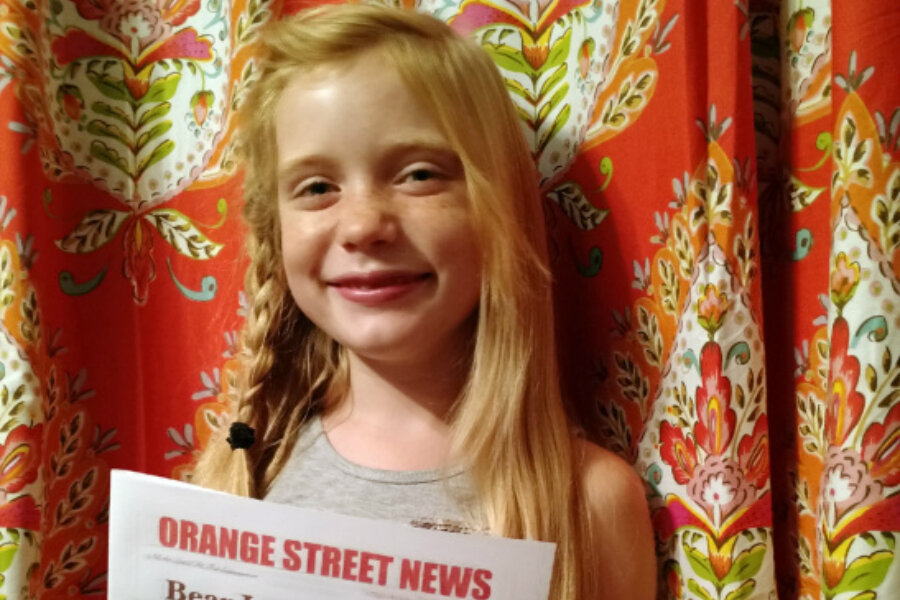Should child journalists cover homicides?
Loading...
When local reporter Hilde Kate Lysiak heard a tip about an heavy police activity on Ninth Street in Selinsgrove, Pa., on Saturday, she immediately headed out to find out what happened.
Her story, headlined “EXCLUSIVE: MURDER ON NINTH STREET!” easily beat the competition and included a video.
But on social media, the seemingly routine story about an alleged murder quickly went viral and drew a corresponding backlash, because Hilde is 9 years old.
Online, some commenters suggested that she should be playing with dolls and questioned why her parents were letting a third grader report on a crime scene.
The debate mirrored similar concerns about young reporters covering the presidential campaign, particularly as several rallies hosted by Republican front-runner Donald Trump turned violent.
But Hilde, who has been editor and publisher of the Orange Street News since 2014, when she was 7, immediately fired back with a video response.
"I know this makes some of you uncomfortable and I know some of you just want me to sit down and be quiet because I'm 9. But if you want me to stop covering news, then you get off your computer and do something about the news. There, is that cute enough for you?" she says in the video.
Her parents say they don’t have concerns about Hilde’s interest in reporting from the scene of a suspected crime.
"I really don't," Bridget Lysiak, Hilde’s mother said in an interview on Good Morning America. "I think we talk so much about the glory days of the '70s and the '80s when kids were roaming free. But really, statistically, kids are safer now than they were then. The police are at the crime scene. I’m really not too worried. It's not like she was inside the house."
As the Christian Science Monitor’s Jessica Mendoza reported last year, a slew of data – including falling child mortality rates in the United States and a decreasing number of interstate wars around the globe – appears to support that idea.
Hilde told The Washington Post she'd been bitten by the journalism bug years ago, as her father, a former reporter for the New York Daily News, took her on trips to his newsroom and as he covered stories around New York.
Some parents said the decision over whether it should ultimately be up to Hilde's parents.
"At age 9, for a girl who is already a 'local reporter,' I have to believe she could handle the details," Beth Engelman, mom to a 10-year-old and co-founder of the site Mommy on a Shoestring told CNN. "That isn't to say every 9-year-old could."
The presidential race has raised questions about how budding young reporters should handle challenges that continue to vex journalists of all ages – such as how to cover an event that turns violent.
Asked about the viciousness of the campaign by 11-year-old Gracie Wood last month, Donald Trump, the Republican frontrunner, responded, "It’s not really O.K., but it's something you have to live with. It’s called life. As you grow older, you'll understand it. The campaigns can be very vicious, just like life can be very vicious. But you have to figure it out and overcome it."
Kyra O’Connor, 15, who's covered several Mr. Trump events in Ohio for Scholastic's Kids Press Corps, told USA Today she wasn't as concerned about her own safety – her father is nearby when she is reporting – but about what she sees as Trump’s deep distrust of the press.
She's concerned that he could rub off on his supporters.
"It's a weird balance," she told the paper. "They dislike the media because of these things that they think are untrue or painting them badly. But they also kind of have to love us because we're getting their message across so everyone can hear it."
For Hilde, the chance to report from the crime scene was also an opportunity to inform the public, including correcting misinformation.
"I want to keep doing my paper. I'm going to keep doing it and I hope it gets bigger," she said on Good Morning America. "And I'm also working on writing a book with my mom."







